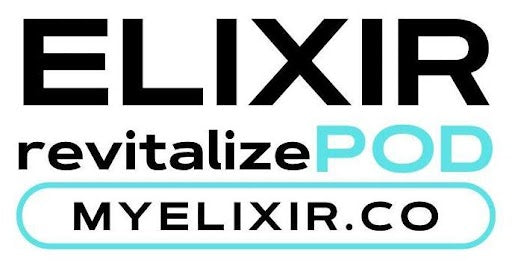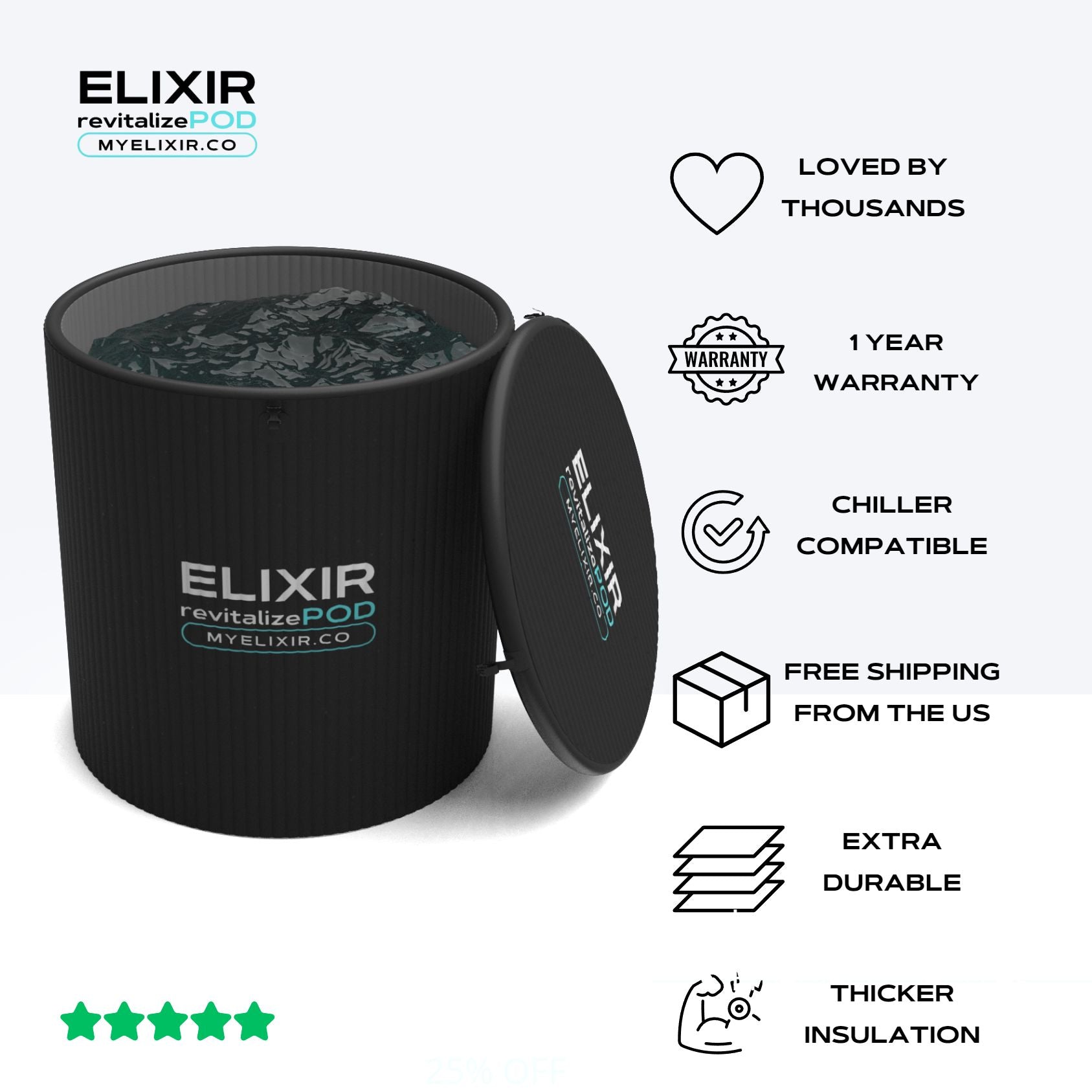Migraines are more than just a bad headache—they can cause intense pain, nausea, sensitivity to light and sound, and leave sufferers incapacitated for hours or even days. As those living with migraines seek out treatments that can offer relief, cold water therapy has emerged as a potential remedy. While it's popular for reducing inflammation and aiding muscle recovery, many wonder whether practices like ice baths, cold plunges, or using portable ice pods might help alleviate migraines, or if they pose risks. In this blog, we’ll dive into whether cold water therapy is a positive or negative treatment option for migraine sufferers, backed by scientific research and medical studies.
What is Cold Water Therapy?
Cold water therapy, also known as cryotherapy or cold plunge therapy, involves immersing the body in cold water for therapeutic purposes. This can be done through ice baths, cold showers, or using specialized equipment like portable ice pods and water chillers for home use. Typically, the water temperature ranges from 50-59°F (10-15°C), and the therapy is believed to promote recovery by reducing inflammation, improving circulation, and boosting mental clarity. But when it comes to migraines, is this treatment a good idea?
The Connection Between Cold Water and Migraines
Cold water therapy’s potential for aiding migraine sufferers is linked to its ability to constrict blood vessels, which can reduce the throbbing pain associated with migraines. When exposed to cold, the body responds by redirecting blood flow away from the surface to protect core temperature. This vasoconstriction (narrowing of blood vessels) is believed to reduce the dilation of blood vessels in the brain, which is often a cause of migraine pain.
However, cold water therapy can be a double-edged sword for those with migraines. While the initial cold exposure may offer relief, the body’s reaction when returning to normal temperatures can sometimes trigger or worsen headaches in those prone to migraines. Let’s take a deeper look into the science to see whether cold therapy is more of a remedy or a risk.
Positive Effects of Cold Water Therapy on Migraines
- Vasoconstriction and Pain Relief
As mentioned earlier, one of the main benefits of cold water therapy for migraines comes from vasoconstriction. A study published in the Headache: The Journal of Head and Face Pain found that applying cold packs to the carotid arteries (located in the neck) reduced migraine symptoms for many participants. By cooling down this area, blood vessels constrict, which reduces the flow of blood and can potentially prevent the intense pressure that contributes to a migraine.
Migraines are often associated with the dilation of blood vessels in the brain, so cold water’s ability to promote vasoconstriction offers a promising method for easing this pressure.
- Reduction in Inflammation
Cold water therapy has long been lauded for its ability to reduce inflammation, which can be beneficial for migraine sufferers who experience inflammation as part of their symptoms. An ice bath or cold plunge reduces inflammatory markers in the body, potentially helping those who have migraines triggered by physical stress or systemic inflammation.
- Endorphin Release and Mental Clarity
Cold water immersion is also known to release endorphins, the body’s natural painkillers. This can offer mood-boosting effects and relief from the stress and anxiety that often accompany migraines. Many users of ice pods and portable cold water therapy systems report feeling a sense of mental clarity and mood enhancement after sessions. Given the link between mental stress and migraines, this could be another way that cold water therapy indirectly helps manage migraine symptoms.
- Studies Supporting Cold Therapy for Headaches
A 2013 study from the University of Hawaii found that cold therapy reduced headache severity in many participants when applied early during an attack. The researchers suggested that cold applications, particularly to the head and neck areas, might offer substantial relief for migraine sufferers. Portable ice baths or water chillers for cold therapy could mimic this effect by lowering overall body temperature and easing symptoms before they escalate.
Potential Drawbacks of Cold Water Therapy for Migraines
- Cold Shock Response
One potential downside of cold water therapy for migraines is the body’s “cold shock response,” which can sometimes trigger an opposite reaction. The sudden exposure to cold water can cause rapid breathing, an increase in heart rate, and even headaches in some individuals. For those prone to migraines, this shock can actually serve as a trigger for an attack. For this reason, it’s essential for migraine sufferers to ease into cold water immersion gradually.
- Rebound Dilation
While cold water therapy initially causes vasoconstriction, there’s a chance of rebound dilation as the body warms back up. This dilation can cause the blood vessels in the brain to widen again, potentially leading to a migraine. For people who are sensitive to temperature fluctuations, this rebound effect could be a risk factor for triggering headaches.
- Lack of Consistent Research
Although some studies suggest that cold therapy can reduce headache and migraine symptoms, research in this area is still relatively limited. Much of the evidence is anecdotal or based on small-scale studies. While cold therapy is known to help with muscle recovery, its specific effects on migraines require further exploration.
Who Should Be Cautious with Cold Water Therapy?
-
People with Cold-Sensitivity Triggers: Individuals who experience migraines triggered by cold environments or food might want to approach cold water therapy cautiously. A cold plunge or ice bath could induce a migraine instead of preventing one.
- Those with Heart Conditions: Cold water therapy isn’t suitable for everyone. People with cardiovascular issues should consult a doctor before attempting cold therapy, as the sudden immersion can cause strain on the heart.
Elixir: An Ideal Solution for Cold Water Therapy at Home
For those who want to explore cold water therapy as a treatment for migraines or other health benefits, having a portable, easy-to-use setup is key. The Elixir portable ice bath offers a convenient and effective way to try out cold water therapy from the comfort of your home.
Practical Tips for Migraine Sufferers Trying Cold Water Therapy
If you’re a migraine sufferer interested in trying cold water therapy, here are a few tips to maximize the benefits while minimizing risks:
-
Start Slow: Gradually expose yourself to colder water by starting with cold showers or lukewarm baths before transitioning to an ice bath or cold plunge.
-
Monitor Duration: Keep your cold therapy sessions short, around 3-5 minutes initially, to avoid shocking your system or triggering a cold-induced migraine.
-
Focus on the Neck and Head: Applying cold packs directly to the neck or base of the skull may offer targeted relief without needing to immerse your whole body.
-
Consistency is Key: Like most therapies, regularity matters. Using the Elixir portable ice bath consistently may lead to more noticeable improvements over time.
Conclusion: Is Cold Water Therapy Positive or Negative for Migraine Sufferers?
The research suggests that cold water therapy holds promise for migraine relief due to its vasoconstriction properties, inflammation reduction, and endorphin release. However, it’s important for migraine sufferers to approach it cautiously and consider individual triggers, such as cold sensitivity. Starting with targeted cold applications and gradually working up to full immersion in a portable ice bath like Elixir could be a safe way to explore its benefits.
As with any new therapy, it’s wise to consult with a healthcare professional before incorporating cold water therapy into your migraine management plan. While it may not be a one-size-fits-all solution, for some migraine sufferers, cold water therapy could offer a natural, drug-free way to find relief.



